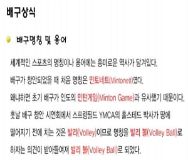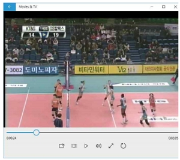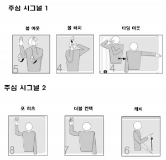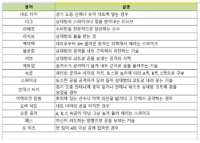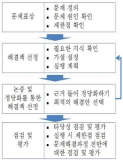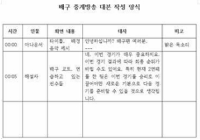PURPOSE This study was designed to propose a quantitative base training evaluation method through alpine ski training monitoring using a triaxial accelerometer. METHODS Twelve Korean alpine ski athletes, six each in France and New Zealand, participated in this study. Activity data during training and daily living were collected for 7 days via the Actigraph GT9X. The collected data were downloaded through ActiLife Ver 6.13.1. Energy expenditure was calculated with Freedson (2011), and the resting metabolic rate was corrected using the Harris & Benedict (1918) formula. Further, the physical activity intensity classification criteria and METs formula of Freedson (1998) were used to classify hourly activity intensity. The collected data were organized by date, time, intensity, and energy expenditure using Microsoft Excel 2016. Differences between weekdays vs. weekends and skiing vs. physical training were analyzed through a paired sample t-test using Windows SPSS 23 with a significance level of a=.05. RESULTS First, both groups showed repetitive on and off high-intensity activities during scheduled ski training and competition. Second, moderate-intensity activities accounted for an average of 6-10%, and the weekly total time and intensity of MVPA was very high. Finally, the group from France showed differences in total energy expenditure during weekdays vs. weekends (p<.05) and the energy expenditure of both ski training and physical training during weekdays vs. weekends (p<.05). The New Zealand group showed a difference in total energy consumption during weekdays vs. weekends (p<.05). CONCLUSIONS A systematic training program based on quantitative training evaluation should be developed for alpine ski athletes to maintain proper rest and exercise intensity levels.
The purpose of this study was to examine whether β-alanine ingestion for 8 weeks can regulate isokinetic knee strength, and 3km record in middle-long distance woman cyclists. Fourteen middle-long woman cyclists participated in this study and were divided into two groups; training group with beta-alanine ingestion and training group with placebo ingestion. All subjects took in beta-alanine or placebo supplement three times per a day for 8 weeks. Physical activity was evaluated by measuring the isokinetic muscular strength and 3km record before and after intervention for 8 weeks. As a results, in isokinetic test, there were significant interrelationships in peak torque of the right and left flexors at 60°/sec, peak torque of the right and left extensors at 180°/sec, peak torque of the right flexors at 180°/sec. In 3km record, result showed a significant interrelationship by groups and time. The results of present study provide evidence that beta-alanine supplement may be effective to increase physical activity and competition record in middle-long woman cyclists.
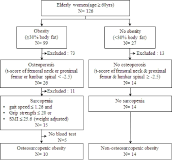
Purpose The purpose of this study were to assess physiological and biochemical characteristics in elderly women with osteosarcopenic obesity (OSO), and to analyze relationships among irisin, adipokines and bone metabolism markers. Methods 126 elderly women were selected and among them 10 women were classified into OSO group (76.9±5.2 yrs) and 14 women were classified as a NOSO group (72.9±5.6 yrs). Physique, body composition and bone mineral density were measured. Senior fitness tests were 30-s chair stand, 30-s arm curl, chair sit-and-reach, back scratch, 8-foot up-and-go, grip strength, and 2-min step test. Isokinetic muscle strength was measured by isokinetic dynamometer (Cybex 770, USA). Nutrition intake and physical activity were administered. Biochemical parameters including irisin, FNDC-5, leptin, adiponectin, CTx, 25(OH)D, osteocalcin, and PTH were measured. All data were analyzed by SAS 9.4. Independent t-test was applied to compare between OSO and NOSO groups. Multiple regression analysis was used. The level of significance was set at .05. Results The results of the study showed that there were significantly high for waist circumference, hip circumference, WHR, and BMI in OSO group compared to those of NOSO group. Higher results were also obtained for fat tissue and percent body fat but significantly low for lumbar bone mineral density. OSO group showed significant lower results for grip strength and 2-min step test compared to NOSO group. Peak torque, and relative peak torque at 60° were significantly lower for left and right knee flexion in OSO group. Protein intake was significantly low in OSO group, but no difference was obtained in level of physical activity between two groups. Irisin was significantly related to adiponectin, FNDC-5 and osteocalcin in explaining 35.2%, 81.5% and 92.1% of the variance, respectively. Conclusions This study shows that elderly women with OSO have higher results for physique and body composition parameters except body height. However, lower values were obtained for functional fitness, and isokinetic muscle strength. OSO may have more risks for metabolic syndrome, bone fractures, fall, lack of daily physical activity and limit of locomotion due to the imbalance of quadriceps and biceps femoris in non dominant leg. This study suggests that criteria and mechanism of OSO should be clarified by follow-up study.

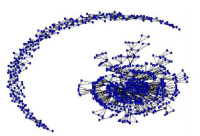
The purpose of this study was to identify the structure of knowledge in Sport Pedagogy field. Using bibliometric and social network analysis this study analyzed the keywords and citations appeared in Korean Journal of Sport Pedagogy and Korean Journal of Sport Science during 2006-2015 period. Total of 341 research papers which include 1301 keywords and 14826 citation were analyzed utilizing social network analysis as well as keywords frequency analysis, keyword co-occurrence, citation and co-ictation analysis. Results of this study showed that teaching, curriculum, and teacher education were three central theme in Sport pedagogy field. Key words such as physical activity, PE teacher, action research, and after school sport club activity were prominent research interests for scholard in the field. Quadradic Assignment Procedure analysis showed major research interests has not been changed between two periods of 2006-2010 and 2011-2015. Choi(2010)'s and You(2007)' books were most cited individual work and have influenced sport pedagogy researchers over the five years.

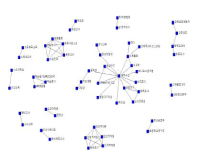

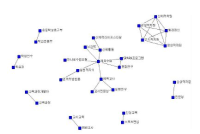
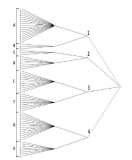
The purpose of this study was to examine the current status of school sport club(SSC) participation and to explore relationship between school sport participation and positive youth development. In order to do this, a survey was conducted with 403 elementary, middle, and high school teachers who are currently taking charge of SSCs, and also individual interviews were conducted with 22 students. In addition, the youths' developmental asset questionnaire was administered with 412 middle school students. The survey results from 403 teachers showed that SSCs have potential to contribute to positive youth development because teachers are placing an emphasis on character development as well as physical and social development through SSC activities. In addition, participants who regularly participate in physical activities had higher internal and external developmental assets than non-participants or irregular participants. Specifically, students participated in SSC more than twice a week had higher internal and external assets than students participate once a week. In addition, participants who engage more than one hour per session had higher internal and external assets except constructive use of time and social competence. Discussion and implications for organizing SSCs to provide developmental contexts and contents for positive youth development were provided.
Purpose The valuable impacts of exercise-intervention in diverse type of cancer patients were rationally well-prescribed, though many experimental and review researches already performed in this fields. Generally, cancer-related fatigue and pain remains one of the most prevalent problems for cancer populations. Therefore, exercise has become increasingly significant in cancer prevention and progression. The purpose of this recent study was to analyze the combined exercise program on cancer-related fatigue, pain, quality of life and cancer prognosis in diverse type of cancer patients. This study analyses the safety and feasibility of exercise intervention in diverse stages of cancer patients such as early stage, advanced stage and even metastatic periods in cancer populations. we also wanted to know the impacts of dose-response trial of aerobic and resistance exercise on quality of life in cancer survivors. Methods we conducted a comprehensive PubMed/MEDILINE electronic database from Jan 2015 to August 2020. The reference lists of eligible experimental research articles and relevant systemic review articles were checked. Inclusion criteria were adult cancer survivors from randomized controlled trials performing well-tailored exercise intervention programs to diverse type of cancer patients, Using predefined search items ‘exercise-intervention, cancer & immunology’. Based on reference search, more than 100 articles were identified whereas 30 research papers met the inclusion criteria and were well connected with exercise-intervention and cancer progression. we analyzed the connections between physical exercise and cancer intervention in the main text. Results Moderate to vigorous exercise (aerobic and resistance exercise) revealed to decreased level of cancer-related fatigue, pain, and cancer-related symptoms, however increased level of sleep quality, activities of daily living, exercise performance and health- related quality of life. Exercise intervention reduced pro-inflammatory markers and oxidative stress as well as insomnia, fatigue, pain symptoms whereas it enhanced the antioxidant systems and immune functions. In addition, home-based aerobic physical exercise might enhance muscular strength and quality of life in many types of cancer survivors. Psychological intervention also effective for reducing cancer-related fatigue and pain during and after cancer treatment. they might be the much better intervention than available pharmaceutical options. we believe that it is the related mechanisms of immune cell mobilization and activation such as NK cells which is induced by the activation of sympathetic system during and after physical exercise. Conclusion According to the aforementioned results, it was concluded that implementation of exercise intervention appear to be the best non-pharmaceutical interventions for cancer populations, and also revealed to be safe and feasible in early and advanced stages, although not in the metastatic periods. Sometimes, psychological intervention such as mindfulness-based stress reduction (MBSR) might be useful in reducing anxiety, depression, fatigue, pain and enhancing quality of life, quality of sleep for cancer populations. we can conclude, exercise-intervention might not just be prevention effect but might be therapeutics, however more studies are urgently needed to confirm the exercise intervention on the NK-receptors activation and immune connection of cancer populations.
PURPOSE This study aimed to investigate the effects of accelerated rehabilitation exercise on physical fitness, lower extremity isometric strength, and blood variables in older adult women diagnosed with degenerative osteoarthritis. METHODS A total of 29 older adult women diagnosed with degenerative osteoarthritis residing in G city participated in the study, and 19 participants, excluding dropouts, took part in the experiment. They underwent exercise twice a week for 60 minutes per session over a period of 12 weeks. Pre- and post-experiment, the older adult fitness assessment (SFT), lower extremity isometric strength, and blood variables were measured. Data analysis was performed using SPSS 25.0, and paired sample t-tests were conducted to examine the effects before and after exercise. RESULTS The study results showed significant differences in body mass index (BMI) before and after exercise (p<0.05), and the older adult fitness assessment (SFT) showed significant differences in all items (p<0.01). Lower extremity isometric strength showed significant differences in absolute (Nm) and relative (%BW) values of 20° right flexion muscle (p<0.01). In terms of blood variables, significant differences were observed in creatine and ESR before and after exercise (p<0.01). CONCLUSIONS This study’s results suggest that regular physical activity and rehabilitation exercise programs can positively impact the muscular strength, cardiovascular endurance, exercise function, and blood composition of older adult women diagnosed with degenerative osteoarthritis. It is indicated that conducting future research, including periodic exercise programs, could be beneficial in promoting sustained exercise participation.
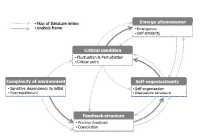
Purpose This study was aimed at interpreting the football talent development stages based on complexity theory. Methods The data for this study was gathered through literature review and in-depth interviews that were analyzed by thematic analysis. Literature review of the studies regarding complexity theory revealed the features of complexity theory and five football players participating in the K-league were interviewed. Gathered materials were analyzed by the thematic analysis. Initial codes and potential themes of football talent development stages, the conception and potential themes of the complexity theory were interpreted by metaphorical analysis. Results Results of literature review were as follows: analysis frame of complexity theory were organized environment of complexity, feedback structure, self-organization, critical condition and emergent phenomenon. The football talent development stages, interpreted as a result of literature review, were divided into Potential Talents, Excellence based Talents Development, Footballizational Talents, Football to Takeoff and Personalization of Football Talents. The stages were specifically materialized as follows: Potential Talents was materialized into physical condition, physical activity preference and change of environment. Excellence based Talent Development was materialized into skill mastery, thoughts about football and relationship with significant others. Footballizational Talents was materilized into skill fractionation, football flow and growth experience. Football to Takeoff was materialized into overcoming crisis experience, performance scaffolding and performance takeoff. Personalization of Football Talents was materialized into manifestation of performance personalization, performance evolution, condition maintenance. Conclusion Football talent development stages, interpreted by means of complexity theory, were divided into Potential Talents stage, Excellence based Talent Development stage, Footballizational Talents stage, Football to Takeoff stage and Personalization of Football Talents stage. Utilization of this study as a fundamental resource of football talents development programs and as a means to understanding football talents development is looked forward to.

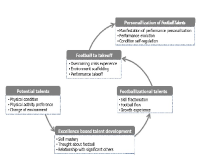

Purpose The purpose of this study was (1) to develop and to apply flipped learning strategies in Physical Education(PE) classes based on Sportscasting Model and (2) to examine the responses of students after PE lesson. Methods Participants were 10th high school students(N=216, male=115, female=101) in high school. Instruction strategies of flipped learning was developed after theoretical investigation, and the unit plans for curling and instructional materials were developed and applied. Open-ended questionnaires and in-depth interviews were used to collect the data. Qualitative content analysis combined with of structures in lesson was used to analyze the data. Results Results showed that (1) 11 instruction strategies of flipped learning were developed, (2) and the unit plan combining out-of class activities and in-class activities organically based on Sportscasting Model and instructional materials for unit of curling were developed and applied. In step of sportscasting, forcing relationship method-sportscasting based on the survey of students was developed and applied. (3) And 31 factors of Sportscasting Model and 15 factors of flipped learning were drawn from the analysis of questionnaires and interviews. Conclusion And to conclude, this research has a value of early study to develop and apply instruction strategies of flipped learning, the unit plan and instructional materials for combining Sportscasting Model with flipped learning organically. Discussions were provided in terms of the development of flipped learning applied in PE classes and responses of students.


Sportscasting in Physical Education (Lee, 2011) is a class activity that students simulate sports broadcasting (e.g., students report, analyze, and comment on game play). It encourages problem solving (PS) learning for students. Scaffolding is the support with the intention of helping the student achieves his/her learning goals and contributes to problem solving. However, limited studies have examined if sportscasting with scaffolding is effective instructional strategies for PS. The purpose of this study was to examine effects of sportscasting with scaffolding on PS abilities, and on academic achievement. Participants were 46 college students. The static-group comparison design was used: an experiment group (N=26) with supportive scaffoldings (e.g., conceptual explanation, terminology dictionary, visual materials) and a control group (N=20) with reflective scaffoldings (e.g., organizing the environment, using appropriate cues to guide behaviors, and modeling). The results revealed that students in reflective scaffoldings had higher PS abilities than students in supportive scaffoldings. However, two groups were not statistically different in academic achievement. Sportscasting with instructional scaffolding promote a deeper level of cognitive skills and male students performed better than female students. The effective scaffolding types (Lewis, 2010) for sportscasting were discussed to help students to foster PS skills.

